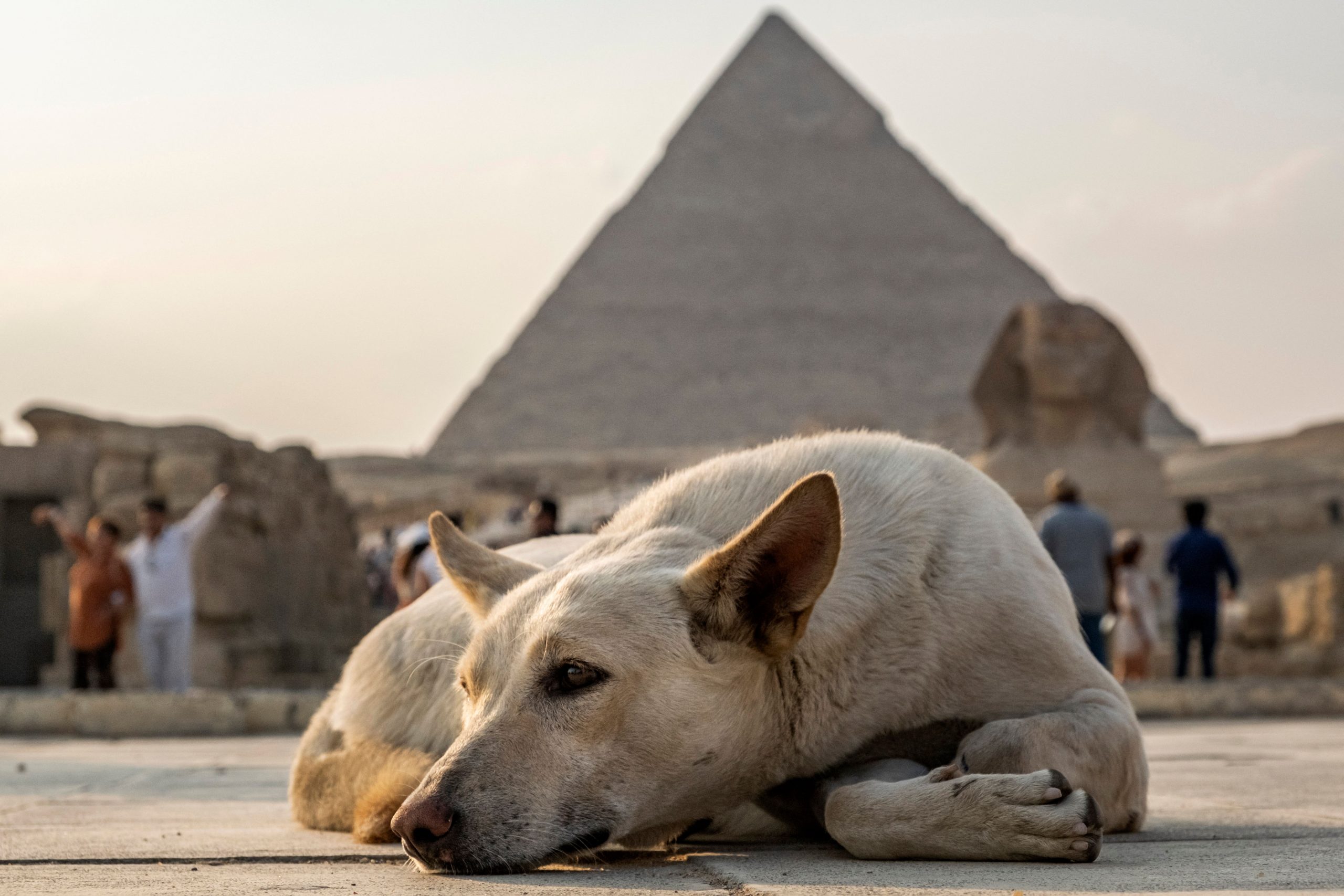
22 Oct Stray Dog's Pyramid Climb Goes Viral—And Raises Concerns for Giza's Ancient Monuments
Source Credit: Content and images from Artnet News. Read the original article - https://news.artnet.com/art-world/stray-dog-scales-pyramid-cultural-heritage-2556440

A video of a stray dog scaling one of the Pyramids of Giza in Egypt has gone viral on the internet. What began as a surprising sight for paragliders flying over the 4,500 year-old Pyramid of Khafre, quickly became an online sensation. The video, shared by one of the paragliders, shows the dog darting back and forth on the very top of the 449.5-foot-tall ancient monument. Beyond its heartwarming humor, the video also raises serious concerns about protecting one of the world’s most cherished heritage sites.
Each year, more than 14 million people visit The Pyramids of Giza, a UNESCO World Heritage site. Built as monuments to house the tombs of the pharaohs, the pyramids are equally monuments of cultural, historical, and architectural value. Over the centuries, the pyramids have survived many environmental challenges, from erosion to sandstorms, with the rough climate of the Sahara Desert already causing the pyramid to shrink 30 feet from its original height. However, the presence of stray animals, particularly dogs, introduces a new set of concerns.
Stray dogs are a common sight in Egypt, with hundreds reportedly roaming near the base of the pyramids. The video footage of the stray dog on the top of one of the pyramids raises important questions about the vulnerability of ancient monuments to wildlife and human disturbance, as even minor damages could have long-term consequences.
While Egyptian authorities have yet to comment, the incident highlights broader challenges in safeguarding these ancient sites. Human access to the pyramids is strictly regulated, and climbing the pyramids has been illegal since the 1980s. However, there are clearly gaps in preventing non-human visitors and the video serves as a reminder that preserving cultural heritage is a complex task.
Though it’s unclear if the dog caused physical damage, its climb could have contributed to erosion, dislodged ancient stones, or weakened the already fragile structure. Moreover, the presence of animals raises hygiene concerns, as waste or biological residue left behind could affect the site in other, more unpredictable ways. The question then becomes: How can authorities manage wildlife and stray animals in a way that protects these ancient wonders?
Some social media users have drawn parallels between the dog and Anubis, the ancient Egyptian god often depicted with a jackal’s head. As the god of the afterlife and protector of graves, Anubis was believed to watch over the deceased, a fitting connection for the dog wandering atop the pyramids.
While the image of a canine Anubis atop Khafre’s pyramid might spark a moment of amusement, it shouldn’t distract from the more serious issues at hand. The pyramids are already vulnerable to natural and human threats, from pollution to overcrowding, and protecting them requires constant surveillance. The sight of a stray dog running around the summit of a 137m tall monument is a reminder of the ongoing tension between accessibility, preservation, and the unpredictability of the modern world surrounding ancient historical sites.
As the viral buzz fades, Egyptian authorities may need to consider proactive measures, from increased monitoring to working with animal shelters to manage the stray dog population near the site. While this particular dog may have safely descended, the incident leaves us with important questions about the intersection of preserving cultural heritage sites and the potential threats posed by wildlife.
Source Credit: Content and images from Artnet News. Read the original article - https://news.artnet.com/art-world/stray-dog-scales-pyramid-cultural-heritage-2556440

